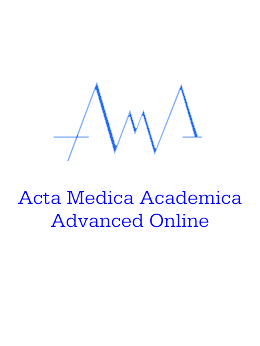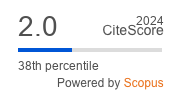Virtual and Augmented Reality in Anatomy Education: Exploring New Horizons
DOI:
https://doi.org/10.5644/ama2006-124.481Keywords:
Anatomy Education, Virtual Reality, Augmented Reality, Medical Technology, Health SciencesAbstract
This review explores how virtual and augmented reality technologies are transforming medical education and clinical practice, particularly in anatomy instruction. Virtual and augmented reality technologies are reshaping our perception and interaction with anatomical structures. Their integration into medical practice has introduced opportunities in diagnostics, surgical training, rehabilitation, and patient education. With the increasing number of U.S. Food and Drug Administration approvals, these technologies offer a transformative shift in the teaching and practice of medicine. Virtual environments facilitate detailed anatomical visualization, offering students and trainees immersive and interactive experiences. This paper highlights the role of these technologies in enhancing educational methods, improving knowledge retention, and overcoming traditional limitations, such as the scarcity of cadavers.
Conclusion. Virtual and augmented reality offer novel educational tools in the health sciences, providing cost-effective, accessible, and innovative approaches to anatomy education and clinical application. Further research is required to elucidate the benefits of these technologies in the education and training of medical students.
References
Khor WS, Baker B, Amin K, Chan A, Patel K, Wong J. Augmented and virtual reality in surgery-the digital surgical environment: applications, limitations and legal pitfalls. Ann Transl Med. 2016;4(23):454. doi: 10.21037/atm.2016.12.23.
Azuma R, Baillot Y, Behringer R, Feiner S, Julier S, MacIntyre B. Recent advances in augmented reality. IEEE Comput Graph Appl. 2001;21(6):34-47. doi: 10.1109/38.963459.
Itoh Y, Hayashi Y, Tsukui I, Saito S. The ergonomic evaluation of eye movement and mental workload in aircraft pilots. Ergonomics. 1990;33(6):719-33. doi:10.1080/00140139008927181.
Loomis JM. Counterexample to the hypothesis of functional similarity between tactile and visual pattern perception. Percept Psychophys. 1993;54(2):179-84. doi:10.3758/bf03211753.
Fuchs H, State A, Pisano ED, Garrett WF, Hirota G, Livingston M, et al. Towards performing ultrasound-guided needle biopsies from within a head-mounted display. In: Visualization in Biomedical Computing. 4th International Conference, VBC ‘96, Hamburg, Germany, September 22-25, 1996, Proceedings. Berlin: Springer; 1996. p.591- 600.
Monsky WL, James R, Seslar SS. Virtual and augmented reality applications in medicine and surgery - the fantastic voyage is here. Anat Physiol. 2019;9(1):1.
Zweifach SM, Triola MM. Extended Reality in Medical Education: Driving Adoption through Provider- entered Design. Digit Biomark. 2019;3(1):14-21. doi: 10.1159/000498923.
Paliokas I, Kekkeris G. A creative approach to scripting educational Virtual Reality Learning Environments (VRLE) [in Greek]. In: Education and New Technologies Conference. Athens, Greece; 2007.
Mehmet AO, Topal AD. Blended learning in anatomy education: a study investigating medical students’ perceptions. Eurasia J Math Sci Technol Educ. 2015;11(3):647-83. doi:10.12973/eurasia.2015.1326a.
Skandalakis P, Giannouli N, Piagkou M. Comparative study of the evolution of cadaver provision to the anatomy lab for student education during the 20th century. Greece, Athens; 2013.
Azer S, Azer SA. 3D anatomy models and impact on learning: a review of the quality of the literature. Health Prof Educ. 2016;2(2):80-98. doi: 10.1016/j.hpe.2016.05.002.
Lee I. Mobile augmented reality-based contextaware library management system. Expert Syst Appl. 2014;41(5):2174-85. doi: 10.1016/j.eswa.2013.09.016.
Ma M, Fallavollita P, Seelbach I, von der Heide AM, Euler E, Waschke J, et al. Personalized augmented reality for anatomy education. Clin Anat. 2016;29(4):446-53. doi: 10.1002/ca.22675.
Ma M, Fallavollita P, Blum T, Eck U, Sandor C, Weidert S, et al. Kinect for interactive AR anatomy learning. In: 2013 IEEE International Symposium on Mixed and Augmented Reality (ISMAR); 2013 Oct; Adelaide, Australia. IEEE; 2013. doi: 10.1109/ISMAR.2013.6671803.
Moro C, Štromberga Z, Raikos A, Stirling A. The effectiveness of virtual and augmented reality in health sciences and medical anatomy. Anat Sci Educ. 2017;10(6):549-59. doi: 10.1002/ase.1696. Epub 2017 Apr 17.
Chandrasekaran R. Telemedicine in the Post-Pandemic Period: Understanding Patterns of Use and the Influence of Socioeconomic Demographics, Health Status, and Social Determinants. Telemed J E Health. 2024;30(2):480-9. doi: 10.1089/tmj.2023.0277. Epub 2023 Aug 16.
Scott AM, Clark J, Cardona M, Atkins T, Peiris R, Greenwood H, et al. Telehealth versus face-to-face delivery of speech language pathology services: A systematic review and meta-analysis. J Telemed Telecare. 2025;31(9):1203-1215. doi: 10.1177/1357633X241272976. Epub 2024 Oct 10.
McCoy CE, Alrabah R, Weichmann W, Langdorf MI, Ricks C, Chakravarthy B, et al. Feasibility of Telesimulation and Google Glass for Mass Casualty Triage Education and Training. West J Emerg Med. 2019;20(3):512-9. doi: 10.5811/westjem.2019.3.40805. Epub 2019 Apr 26.
Winkelmann A. Anatomical dissection as a teaching method in medical school: a review of the evidence. Med Educ. 2007;41(1):15-22. doi: 10.1111/j.1365-2929.2006.02625.x.
Faizan Siddiqui M, Jabeen S, Alwazzan A, Vacca S, Dalal L, Al-Haddad B, et al. Integration of Augmented Reality Virtual Reality, and Extended Reality in Healthcare and Medical Education: A Glimpse into the Emerging Horizon in LMICs-A Systematic Review. J Med Educ Curric Dev. 2025;12:23821205251342315. doi: 10.1177/23821205251342315.
Kyaw N, Gu M, Crofti E, Cosgun A. Comparing Usability of Augmented Reality and Virtual Reality for Creating Virtual Bounding Boxes of Real Objects. Appl Sci. 2023;13(21):11693. doi: https://doi.org/10.3390/
app132111693.
Baashar Y, Alkawsi G, Ahmad WNW, Alhussian H, Alwadain A, Capretz LF, et al. Effectiveness of Using Augmented Reality for Training in the Medical Professions: Meta-analysis. JMIR Serious Games. 2022;10(3):e32715. doi: 10.2196/32715.
Yeung AWK, Tosevska A, Klager E, Eibensteiner F, Laxar D, Stoyanov J, et al. Virtual and Augmented Reality Applications in Medicine: Analysis of the Scientific Literature. J Med Internet Res. 2021;23(2):e25499. doi: 10.2196/25499.
Barteit S, Lanfermann L, Bärnighausen T, Neuhann F, Beiersmann C. Augmented, Mixed, and Virtual Reality-Based Head-Mounted Devices for Medical Education: Systematic Review. JMIR Serious Games. 2021;9(3):e29080. doi: 10.2196/29080.
Tene T, Vique López DF, Valverde Aguirre PE, Orna Puente LM, Vacacela Gomez C. Virtual reality and augmented reality in medical education: an umbrella review. Front Digit Health. 2024;6:1365345. doi: 10.3389/fdgth.2024.1365345.
Wu HK, Lee SWY, Chen HY, Liang JC. Current status, opportunities and challenges of augmented reality in education. Comput Educ. 2013;62:41-9. doi:10.1016/j.compedu.2012.10.024.
Downloads
Published
License
Copyright (c) 2025 Dimitrios Nikas, Stamatis Karakatsanis, Ioannis Kalemikerakis, Andreas Koumenis, Theodoros Troupis, Dimitrios Filippou, Nikolaos Tsolis, Theodoros Mariolis-Sapsakos, Dimitrios Vergados, Margarita Toumanidou, Evangelos Dimakakos

This work is licensed under a Creative Commons Attribution-NonCommercial 4.0 International License.





